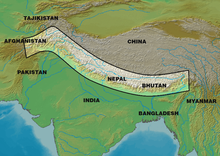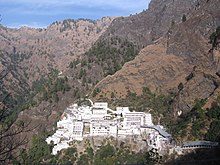
Tenzing Norgay, born Namgyal Wangdi, and also referred to as Sherpa Tenzing, was a Nepalese-Indian Sherpa mountaineer. He was one of the first two people known to certainly reach the summit of Mount Everest, which he accomplished with Edmund Hillary on 29 May 1953. Time named Norgay one of the 100 most influential people of the 20th century.

William Francis Unsoeld was an American mountaineer who was a member of the first American expedition to summit Mount Everest. The American Mount Everest Expedition was led by Norman Dyhrenfurth, and included Unsoeld, Jim Whittaker, Lute Jerstad, Barry Bishop and Tom Hornbein. Whittaker, with Sherpa Nawang Gombu, reached the summit on May 1, 1963. Unsoeld, Hornbein, Bishop and Jerstad reached the top on May 22, 1963. Unsoeld and Hornbein's climb was the first ascent from the peak's west ridge, and the first major traverse of a Himalayan peak. His subsequent activities included working as a U.S. Forest Service smokejumper, Peace Corps director in Nepal, speaker for Outward Bound, faculty member at Oregon State University and The Evergreen State College and mountaineering guide. He died on Mount Rainier in an avalanche.

The eight-thousanders are the 14 mountains recognised by the International Mountaineering and Climbing Federation (UIAA) as being more than 8,000 metres (26,247 ft) in height above sea level, and sufficiently independent of neighbouring peaks. There is no precise definition of the criteria used to assess independence, and, since 2012, the UIAA has been involved in a process to consider whether the list should be expanded to 20 mountains. All eight-thousanders are located in the Himalayan and Karakoram mountain ranges in Asia, and their summits are in the death zone.

Dhaulagiri, located in Nepal, is the seventh highest mountain in the world at 8,167 metres (26,795 ft) above sea level, and the highest mountain within the borders of a single country. It was first climbed on 13 May 1960 by a Swiss-Austrian-Nepali expedition. Annapurna I is 34 km (21 mi) east of Dhaulagiri. The Kali Gandaki River flows between the two in the Kaligandaki Gorge, said to be the world's deepest. The town of Pokhara is south of the Annapurnas, an important regional center and the gateway for climbers and trekkers visiting both ranges as well as a tourist destination in its own right.

Eric Earle Shipton, CBE, was an English Himalayan mountaineer.

Nawang Gombu was a Sherpa mountaineer who was the first man in the world to have climbed Mount Everest twice.
Tashi Wangchuk Tenzing is an Indian-born Australian Sherpa mountaineer. His maternal grandfather, Tenzing Norgay, made the first ascent of Mount Everest on 29 May 1953.

Hugh Ruttledge was an English civil servant and mountaineer who was the leader of two expeditions to Mount Everest in 1933 and 1936.
In the history of mountaineering, the world altitude record referred to the highest point on the Earth's surface which had been reached, regardless of whether that point was an actual summit. The world summit record referred to the highest mountain to have been successfully climbed. The terms are most commonly used in relation to the history of mountaineering in the Himalaya and Karakoram ranges, though modern evidence suggests that it was not until the 20th century that mountaineers in the Himalaya exceeded the heights which had been reached in the Andes. The altitude and summit records rose steadily during the early 20th century until 1953, when the ascent of Mount Everest made the concept obsolete.

Bandarpunch is a mountain massif in the Garhwal Himalaya in Uttarakhand, India. The massif has 3 peaks: White Peak, also called Banderpunch II, to the west above Yamunotri; almost 5 km east is Bandarpunch main peak or Banderpunch I ; and about 4 km to the north-east is Kalanag.

Wallace George Lowe, known as George Lowe, was a New Zealand-born mountaineer, explorer, film director and educator. He was the last surviving member of the 1953 British Mount Everest Expedition, during which his friend Edmund Hillary and Sherpa Tenzing Norgay became the first known people to summit the world's highest peak. Sir Edmund was his fellow Briton and served as his mentor.

Chandraprabha Aitwal is an Indian mountain climber and one of the pioneers of Indian women mountaineers. She was awarded 2009 Tenzing Norgay National Adventure Award for Lifetime Achievement, given by the Indian Ministry of Youth Affairs and Sports. She has climbed Nanda Devi, Kangchenjunga, Trishuli and Mt. Jaonli.

Nanda Devi East, locally known as Sunanda Devi, is the lower of the two adjacent peaks of the highest mountain in Uttarakhand and second highest mountain in India; Nanda Devi is its higher twin peak. Nanda Devi and Nanda Devi East are part of the Garhwal Himalayas, and are located in the state of Uttarakhand. The two peaks are visible from almost everywhere in Kumaon. The first ascent of Nanda Devi East peak was probably in 1939 by Jakub Bujak and Janusz Klarner. The elevation of Nanda Devi East is 7,434 m (24,390 ft) and its prominence is 260 m (850 ft).

Hillary Peak is the name which has been proposed by the Government of Nepal for a 7,681 metres (25,200 ft) peak in the Himalayas in honour of Edmund Hillary, who made the first ascent of Everest with Tenzing Norgay in 1953.
Precipitated by unexpected permission from Tibet, the 1935 British Mount Everest reconnaissance expedition was planned at short notice as a preliminary to an attempt on the summit of Mount Everest in 1936. After exceptionally rancorous arguments involving the Mount Everest Committee in London, Eric Shipton was appointed leader following his successful trekking style of expedition to the Nanda Devi region in India in 1934.

The Shipton–Tilman Nanda Devi expeditions took place in the 1930s. Nanda Devi is a Himalayan mountain in what was then the Garhwal District in northern India, just west of Nepal, and at one time it was thought to be the highest mountain in the world.

Ang Tharkay was a Nepalese mountain climber and explorer who acted as sherpa and later sirdar for many Himalayan expeditions. He was "beyond question the outstanding sherpa of his era" and he introduced Tenzing Norgay to the world of mountaineering.
After World War II, with Tibet closing its borders and Nepal becoming considerably more open, Mount Everest reconnaissance from Nepal became possible for the first time culminating in the successful ascent of 1953. In 1950 there was a highly informal trek to what was to become Everest Base Camp and photographs were taken of a possible route ahead. Next year the 1951 British Mount Everest reconnaissance expedition reconnoitred various possible routes to Mount Everest from the south and the only one they considered feasible was the one via the Khumbu Icefall, Western Cwm and South Col. In 1952, while the Swiss were making an attempt on the summit that nearly succeeded; the 1952 British Cho Oyu expedition practised high-altitude Himalayan techniques on Cho Oyu, nearby to the west.
The role of The Doon School in Indian mountaineering describes the formative links between The Doon School, an all-boys boarding school in Dehradun, India and early post-Independence Indian mountaineering. From the 1940s onwards, Doon's masters and students like A.E. Foot, R.L. Holdsworth, J.A.K. Martyn, Gurdial Singh, Jack Gibson, Aamir Ali, Hari Dang, Nandu Jayal, were among the first to go on major Himalayan expeditions in a newly independent nation. These early expeditions contributed towards laying the foundation of mountaineering in an independent India.
















